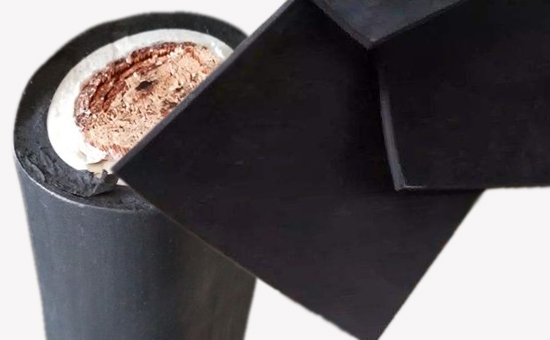
At present, more and more rubber products on the market begin to use recycled rubber in the production of rubber products, and insulating rubber products are one of the major categories. When using reclaimed rubber to produce insulating products, can rubber product manufacturers further improve the insulation of reclaimed rubber products by adjusting the type and amount of compounding agents? So in actual production, which compounding agents are beneficial to improve the insulation of reclaimed rubber? What problems should be paid attention to when choosing rubber accessories for reclaimed rubber insulation products?
1. Vulcanization system
When using reclaimed rubber to produce electrically insulating rubber products, the choice of vulcanization system has an important influence on the electrical insulation of the rubber. Different types of cross-linked bonds can make the reclaimed rubber vulcanized rubber 2LLYY1130 produce different dipole moments, and the vulcanized rubber has different electrical insulation properties. Considering multiple indicators such as electrical insulation and rubber mechanical strength, heat resistance, compression set, etc., soft reclaimed rubber products can choose low-sulfur compounding system or non-sulfur compounding system, and peroxide vulcanization or quinoxime vulcanization system.
In actual production, it is recommended to use peroxide vulcanization when using EPDM reclaimed rubber to produce electrical insulation products. It is more appropriate to use quinone oxime vulcanization system for butyl reclaimed rubber insulation products.
2. Rubber packing
The type and amount of rubber filler are important factors affecting the insulation of reclaimed rubber. Generally, flake and flat particle fillers can form a barrier against electrical breakdown, which is beneficial to improve the insulation of the rubber. In the production of reclaimed rubber insulation products, carbon black should not be used. When carbon black must be used, it is recommended to use medium particle thermal black and fine particle thermal black with large particle size and low structure. Fillers such as pottery clay, talcum powder, calcium carbonate, mica powder, and white carbon black are commonly used in reclaimed rubber electrical insulation products. Avoid using fillers with high water-soluble content, added metal ions or strong water absorption.
Use reclaimed rubber to produce high-voltage insulation products can choose talcum powder, calcined clay or surface-treated clay; low-voltage electrical insulation products can use calcium carbonate, talcum powder and ordinary clay. In order to reduce the water absorption of the filler surface, electrical insulation product manufacturers can use fatty acids or silane coupling agents in the formula to modify the surface of inorganic fillers such as clay and white carbon black to reduce the hydrophilicity and improve the reclaimed rubber and Affinity between fillers.
When using reclaimed rubber to produce electrical insulating rubber products, the type and amount of compounding agents in the softening system and anti-aging system will also affect the insulation of the reclaimed rubber products. Later, the editor will continue to talk with you about the selection techniques of compounding agents in these compounding systems.
Exclusive original article [commercial authorization] reprint, excerpt and excerpt in any form are prohibited without written authorization. Focus on Hongyun rubber: learn the process formula and raw material technology of producing rubber products from recycled rubber to help you reduce costs and increase profits